Why is my morning glory not blooming? 5 problems and solutions to try
Morning glory not blooming? Our advice will help you to remedy this common problem and kick-start your vines into producing beautiful blooms

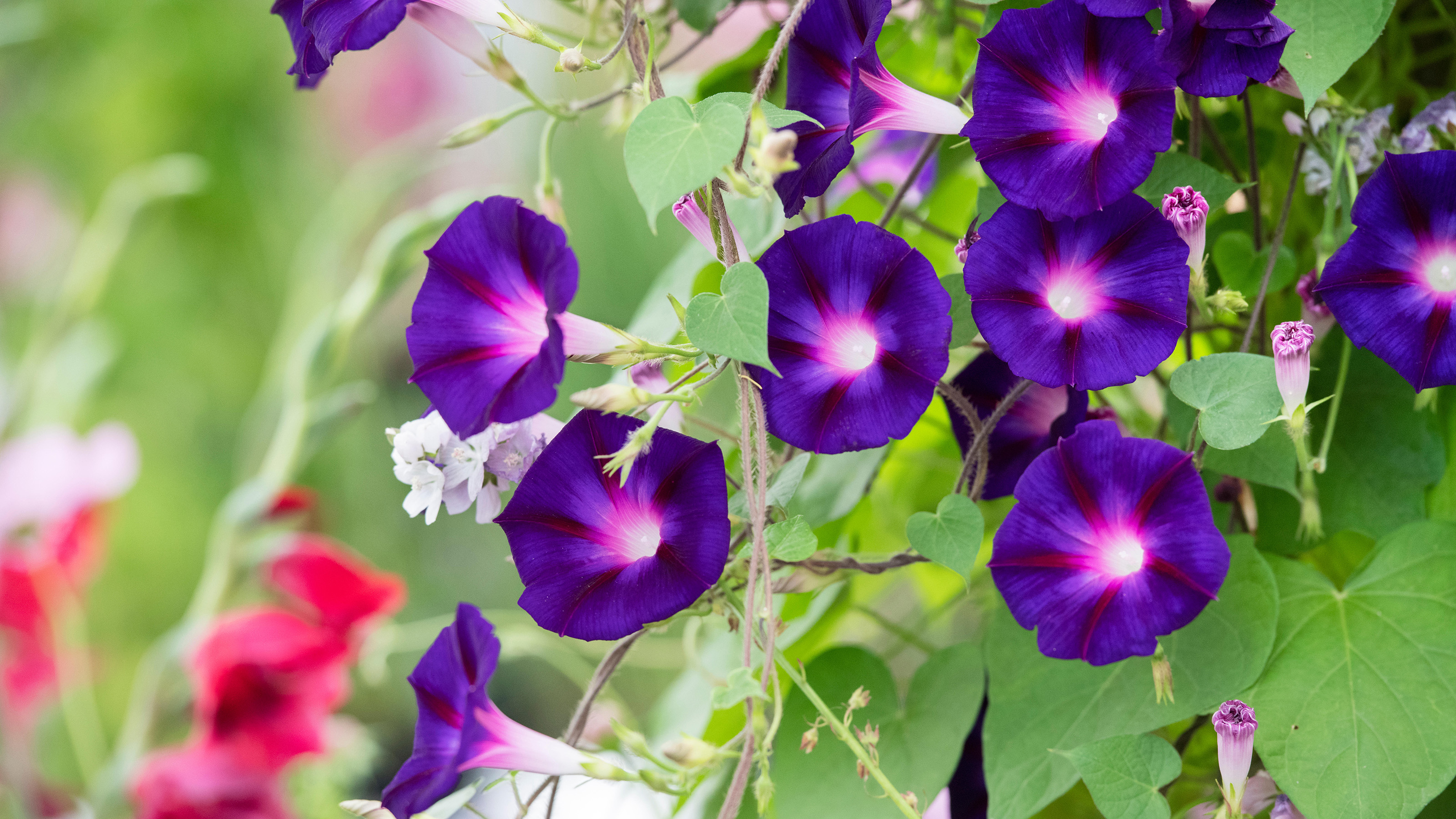
During summer you may start asking 'why is my morning glory not blooming'? With its gorgeous blue or purple trumpet-shaped flowers, morning glory vine (Ipomoea purpurea) is an absolute joy in full bloom, which is why it’s super disappointing when you’ve enthusiastically sown them from seed in spring, only for plants to fail to flower in summer.
Although these gorgeous vines will grow well in most USDA zones (2-11), it’s most likely to be environmental (physical) factors that are causing your plants to be shy at flowering, such as temperature, light and moisture.
The good news for this gorgeous climbing plant is this is something that is relatively straightforward to put right, as you’ll see from our solutions below.
5 reasons for morning glory not blooming
These tips should help your morning glory open up. But if you are struggling to get the right conditions for your morning glory vine, consider growing it in a large planter up a framework of canes or trellis. Pots are ideal for the best fast-growing climbing plants as you can control the growing medium, the rate of moisture, and locate them in the perfect spot.
1. Not enough warmth and sunshine
Ipomoea can be a tricky customer if it doesn’t get its growing requirements met, and one of its demands is warmth and lots of sunshine to bring out the blooms. This is always going to be a tall order in cooler, cloudier regions, but the trick is to find a them a place in south-facing gardens or a spot that gets sun for most of the day.
Watch for overhanging shrubs and trees that may be blocking the light and preventing the plants from flowering – prune them back to allow more sunlight to reach the vines.
If you live in an area with temperamental seasons, it's worth waiting until the beginning of summer to plant out, when the weather is more settled. Late spring can be an iffy time weather-wise, sometimes with cold drying winds and temperature swings, which may be a reason you'll find your morning glory not blooming. In summer, the vines will begin to romp away.
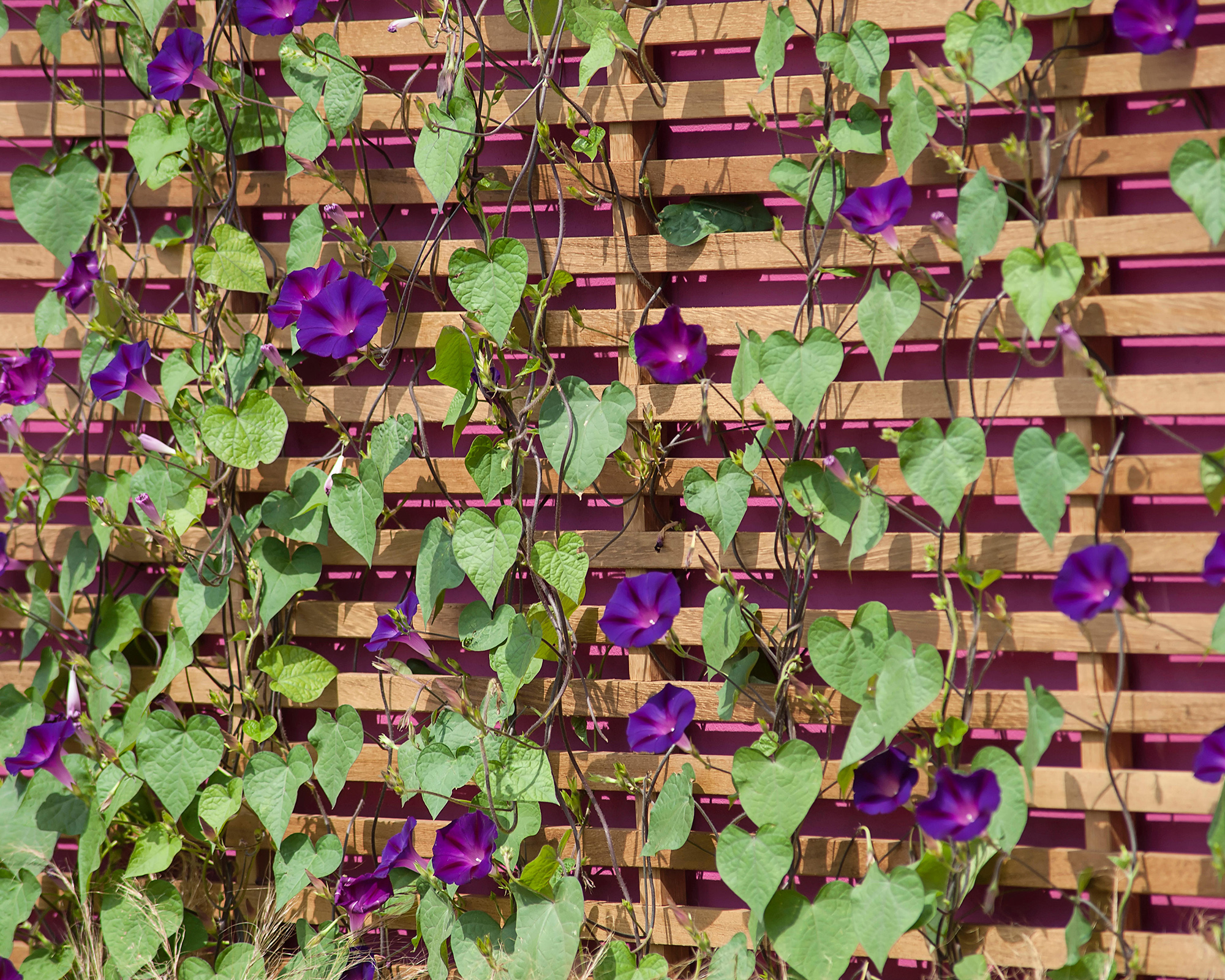
2. Incorrect moisture levels
Plants not receiving the correct water requirements is a common problem. A hydrangea not blooming may be suffering from the exact same ailment.
The roots of this tropical climber enjoy moist but well-draining soil. This oxymoron term can be confusing to new gardeners, but it simply means soil that doesn’t puddle or pool after rainfall, but that retains water for long enough for the roots to absorb what the plant needs. If you have light, sandy soil types, water will drain very quickly.
Mulching with organic matter will help it to retain moisture better and hopefully put an end to the problem of your morning glory not blooming. Just don’t add any chemical fertilizers as you’ll risk the soil being too nutrient-rich (see point 3). As a general rule, water ipomoea deeply once a week during dry spells – if the soil becomes too dry, the plants won’t flower as well.
On the other hand, watch for overwatering and compost/soil getting too damp. 'They really sulk in soggy compost,' says Leigh Hunt, Principal Horticultural advisor at the RHS. Increase the drainage on clay soils by digging in spadefuls of horticultural grit and sand prior to planting.
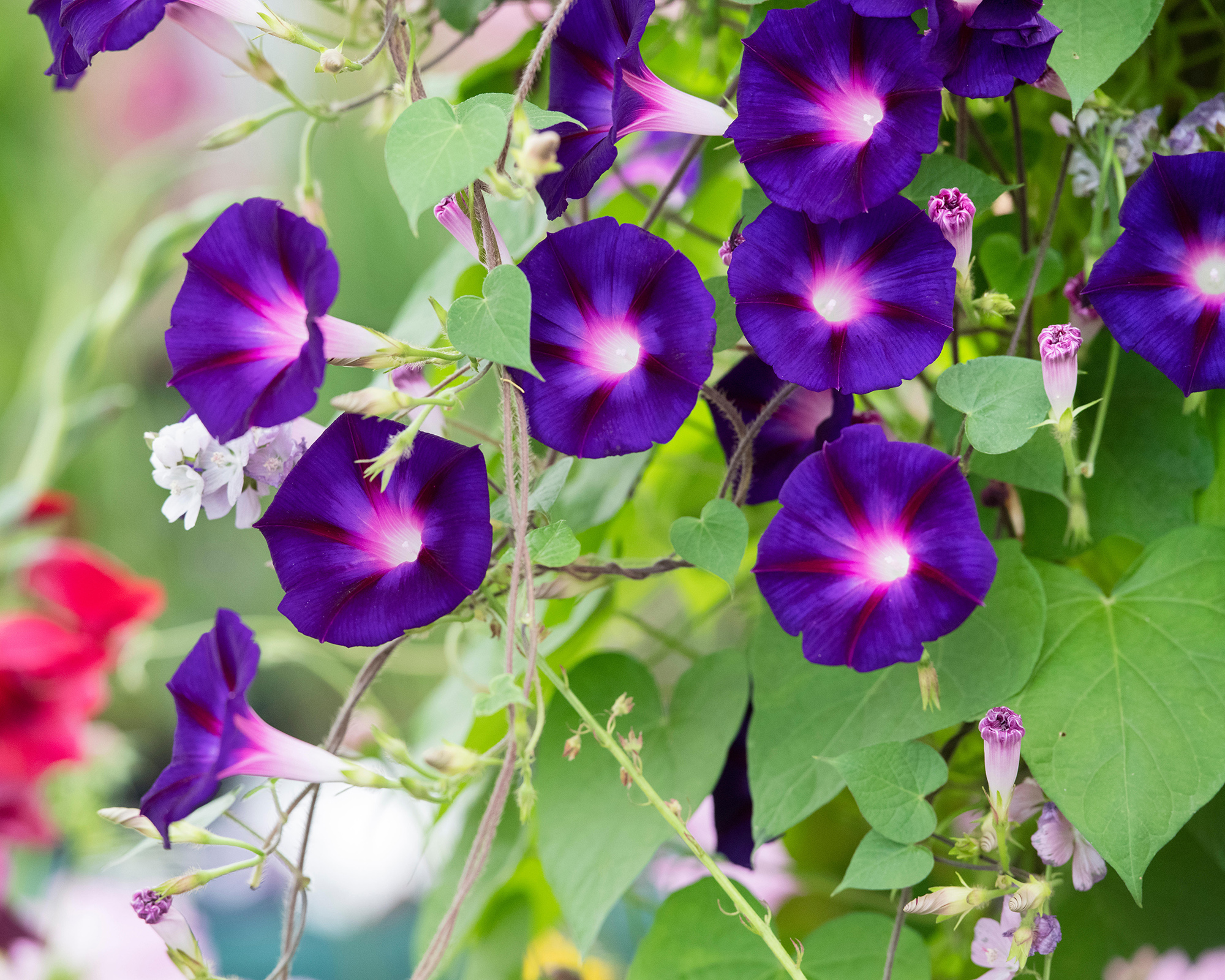
3. Soil is too fertile
Whilst peonies not blooming might be because they are buried too deeply in their soil, morning glory will grumble if the soil good quality. Yes, you read that right, soil that’s too good is no good for this plant.
Ipomoea likes to be treated mean to keep it keen. 'Rich, well-fertilized soil will encourage morning glory to put all its energy into producing foliage and not flowers', says Emma O’Neill, Head Gardener at Garden Organic.
If you garden on rubbish soil or even sandy soil (which doesn’t hang onto its nutrients very well) then you’re fine. But if you have clay soil, which is naturally rich in nutrients, you might be better off growing something else, like rhodochiton or thunbergia.
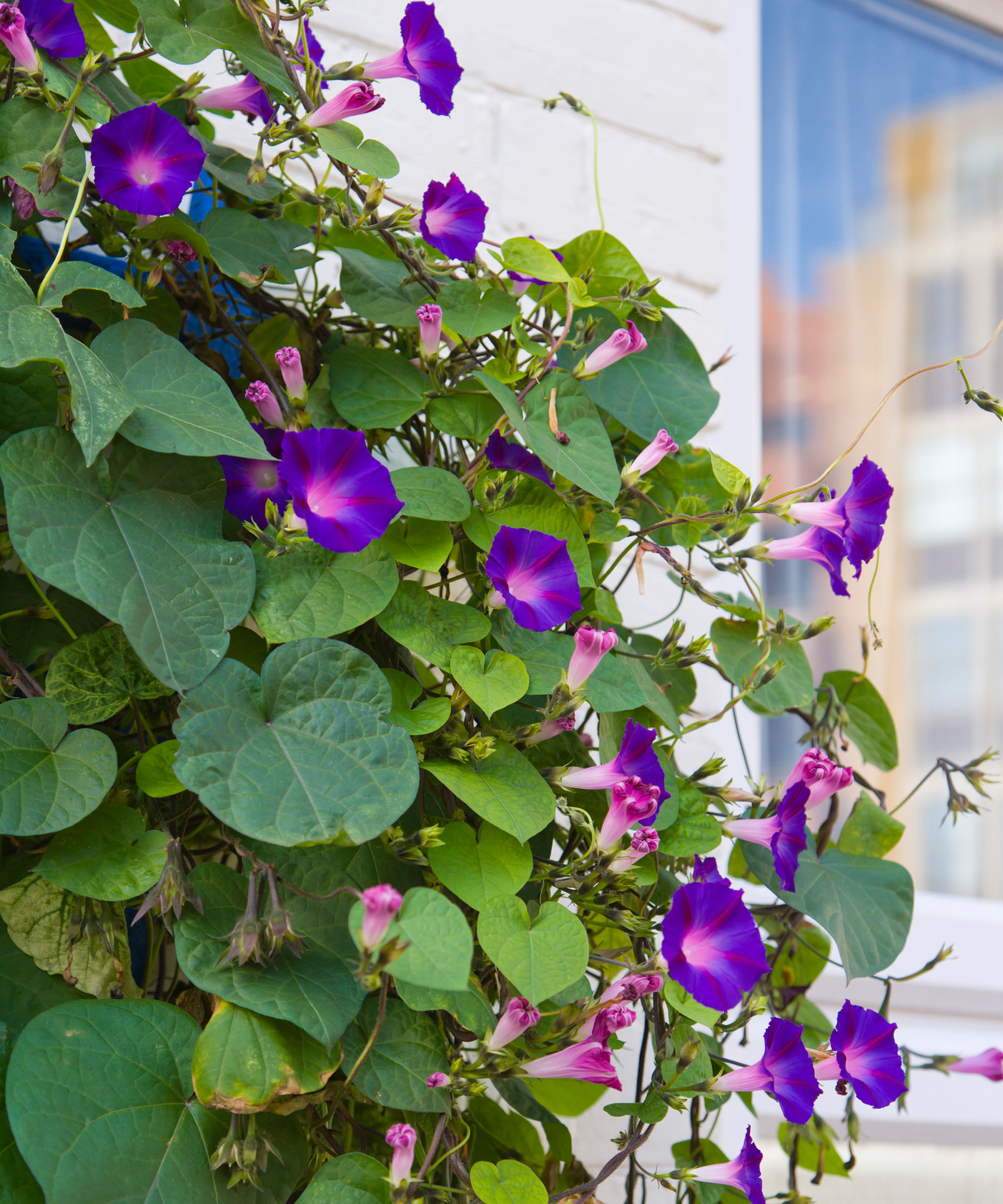
4. Expecting it to flower too early
Like many other climbing annuals – rhodochiton, tropaeolum – Ipomoea purpurea is native to Central America. Here, where the average temperatures are around 80˚F (26˚C), ipomoea is naturally perennial and blooms from early summer well into the winter months. In cooler regions, ipomoea is treated as an annual flower and is sown from seed in spring.
It needs nearly the entire summer to get growing before it finally turns on its blooming show at the end of the summer going into fall. So be patient if yours isn’t flowering yet – these vines need to reach 6ft (2m) before they start popping out their heavenly flowers.
It often pays to sow ipomoea early (at the first sign of spring) – sizable young plants that are planted out in early summer will begin flowering midsummer. Good climbing plant support ideas include growing them up a tepee of tall canes or hazel sticks, or on a fence that has support wires attached.
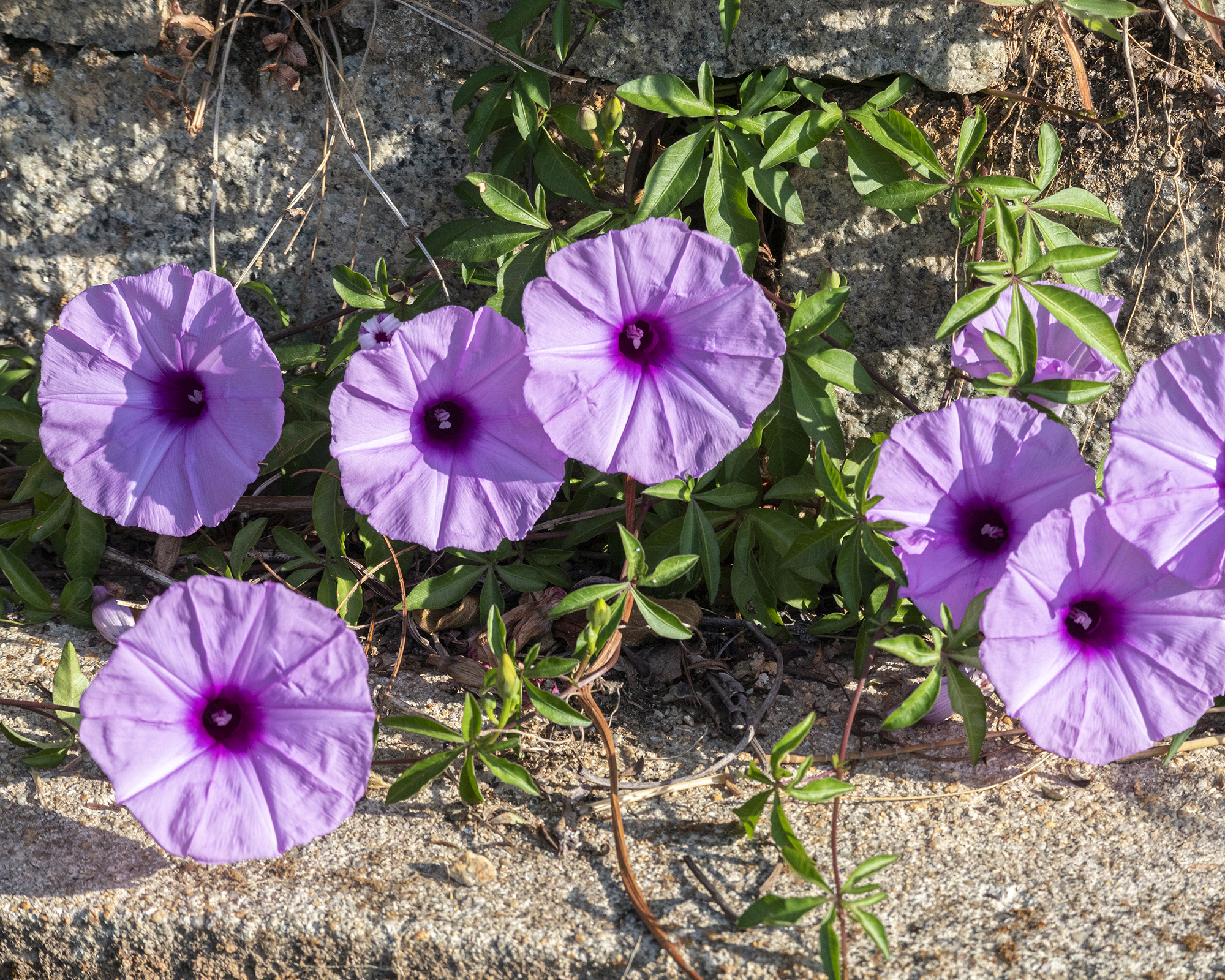
5. Not deadheading flowers
Ipomoea’s common name morning glory is aptly named because the flowers only open once for a few hours in the morning and then shrivel up, with new ones appearing the following day. So, if you’ve noticed this happening with your plant, don’t worry, your plant is not diseased or unhappy.
This is its natural way of being. As is the case with dahlias not blooming, it can be worth deadheading flowers. Although time-consuming, it’s worth removing the spent morning glory blooms too, so that the plant doesn’t put all its energy into producing seed and focuses on producing more blooms instead.
In some regions, morning glory can be considered an invasive plant, another reason to pinch off the blooms to stop it from seeding. In zones 10 and 11, ipomoea will grow as perennial, cut them down to 6in (15cm) from the ground in late winter to get rid of tired, old growth, and encourage good flowering next year.

Working at a garden center when she was 23, Sally realised straight away the therapeutic power of being around greenery and nurturing plants. She's horticulturally trained to degree level and has worked on gardening magazines for over a decade. Sally now gardens in Bournemouth, UK, zone 8a (H5).
